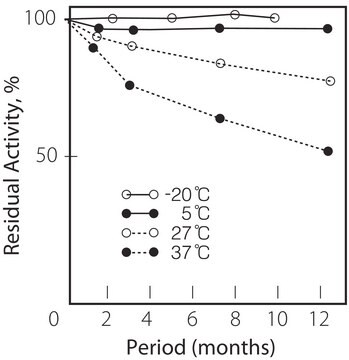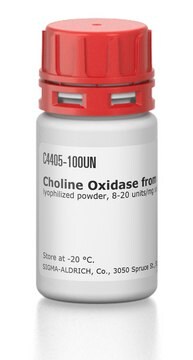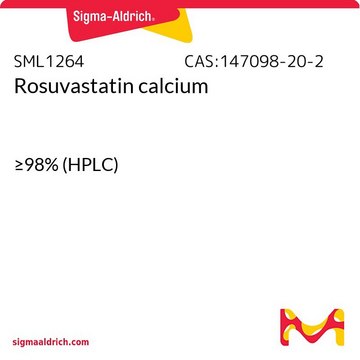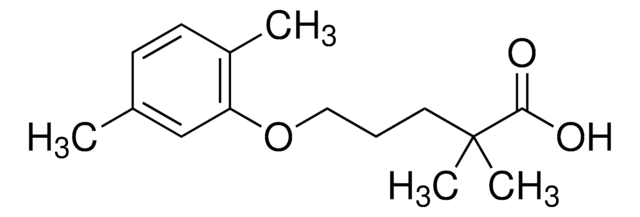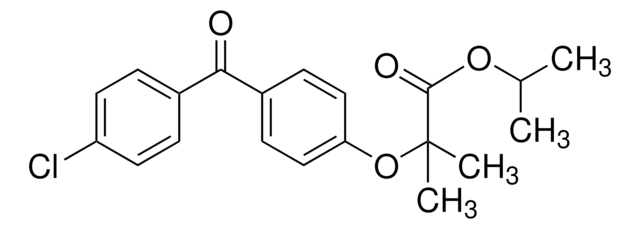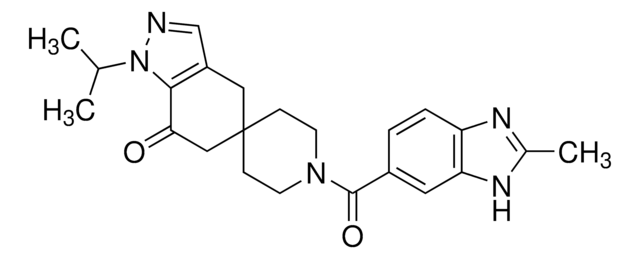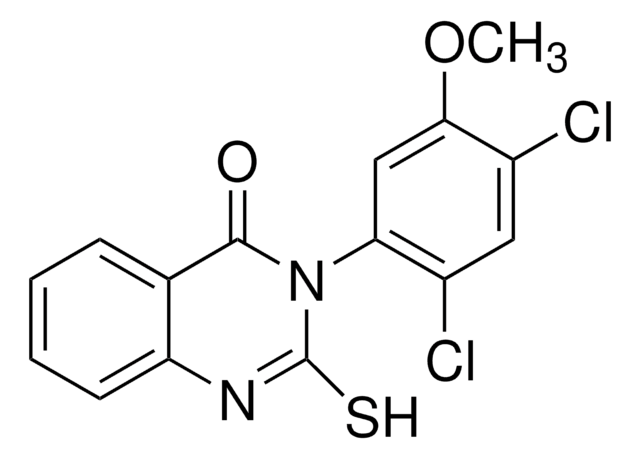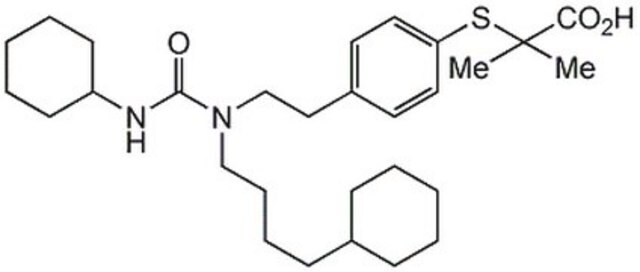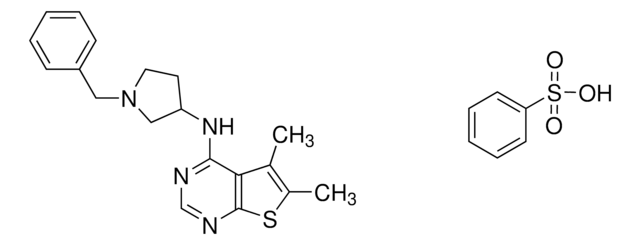C7081
WY-14643
Synonyme(s) :
4-Chloro-6-(2,3-xylidino)-2-pyrimidinylthioacetic acid, Pirinixic acid
About This Item
Produits recommandés
Forme
powder
Niveau de qualité
Chaîne SMILES
CC1=C(C)C=CC=C1NC2=NC(SCC(O)=O)=NC(Cl)=C2
InChI
1S/C14H14ClN3O2S/c1-8-4-3-5-10(9(8)2)16-12-6-11(15)17-14(18-12)21-7-13(19)20/h3-6H,7H2,1-2H3,(H,19,20)(H,16,17,18)
Clé InChI
SZRPDCCEHVWOJX-UHFFFAOYSA-N
Informations sur le gène
human ... PPARA(5465) , PPARD(5467) , PPARG(5468)
mouse ... Ppara(19013)
rat ... Ppara(25747)
Description générale
Application
- as a positive control for transfection and luciferase assay
- to stimulate bone marrow–derived macrophages (BMDM) for autophagic flux analysis
- to analyze the regulation of fatty acid metabolism-immune nexus (FAMIN) expression in cell culture
Actions biochimiques/physiologiques
Caractéristiques et avantages
Mention d'avertissement
Danger
Mentions de danger
Conseils de prudence
Classification des risques
Acute Tox. 4 Oral - Carc. 1B - Eye Irrit. 2 - Skin Irrit. 2 - STOT SE 3
Organes cibles
Respiratory system
Code de la classe de stockage
6.1C - Combustible acute toxic Cat.3 / toxic compounds or compounds which causing chronic effects
Classe de danger pour l'eau (WGK)
WGK 3
Point d'éclair (°F)
Not applicable
Point d'éclair (°C)
Not applicable
Équipement de protection individuelle
Eyeshields, Gloves, type P3 (EN 143) respirator cartridges
Faites votre choix parmi les versions les plus récentes :
Déjà en possession de ce produit ?
Retrouvez la documentation relative aux produits que vous avez récemment achetés dans la Bibliothèque de documents.
Les clients ont également consulté
Notre équipe de scientifiques dispose d'une expérience dans tous les secteurs de la recherche, notamment en sciences de la vie, science des matériaux, synthèse chimique, chromatographie, analyse et dans de nombreux autres domaines..
Contacter notre Service technique